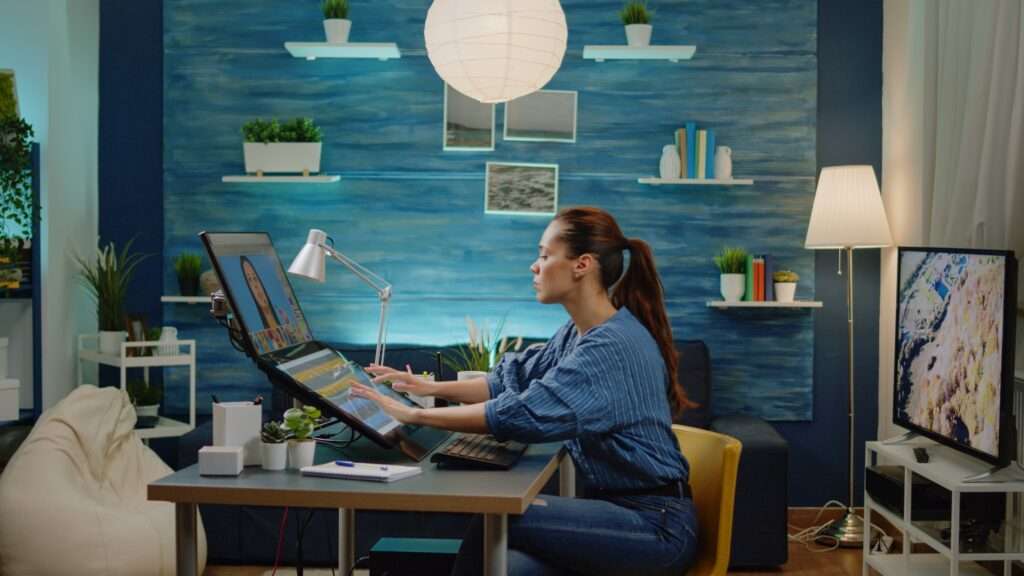
The Importance of Design
Design is important since it brings out an object’s effectiveness in meeting the intended purpose, efficiency of space utilization, ease of use, safety, aesthetics, attractiveness & appeal and feasibility of manufacturing or implementation. It is integral to everything we buy, everything we use. It translates ideas into practical and attractive solutions for users or customers. Scientists can invent products, manufacturers can produce them, engineers can make them work and marketers can take them to customers, but only designers can combine all these dimensions and turn a concept into something that’s desirable, viable, adds value to people’s lives and successful in the market.
Finding out what the customer wants is the first stage of what designers do. The designers then build on the results of that inquiry with a mixture of creativity and commercial insight. Although gut instinct is part of the designers’ arsenal, there are more scientific ways of making sure the design hits the mark. Different designers use different methods – combining market research, user testing, prototyping and trend analysis depending upon the area of specialization.
The Design Specializations
The field of design has many areas of specializations. Some of them are:
Product design involves creating and developing concepts and specifications that optimize the function, value and appearance of products and systems for the mutual benefit of both user and manufacturer. Its emphasis is on those aspects of the product or system that relate most directly to human characteristics, needs and interests and not its engineering elements.
Automotive design is primarily concerned with the creation of the concept and the visual appearance or aesthetics of the interiors and exteriors of a vehicle which could be a car, a motorcycle, a truck or any other mode of transportation. Its focus is aerodynamics, ergonomics, and styling of the exteriors and interiors and safety of drivers, passengers and pedestrians.
Fashion design deals with the development of clothing, accessories, footwear and other items of personal attire. It considers both functional and aesthetic aspects and pays particular attention to relationship of the attire to the human form. A fashion designer focuses on creating the specific look of individual garments including a garment’s shape, color, fabric, trimmings, and other aspects of the whole.
Accessories Design that involves designing embellishments and leather articles intended to complement clothing and contribute to a comprehensive fashion image. Accessories designers use their creativity and artisanry to design, produce and ultimately promote original wardrobe pieces. These can include items such as belts, shoes, ties, scarves, hats, and handbags.
Textile design deals with the planning and development of patterns, knit and weave construction, prints, textures and illustrations for fabrics and other materials used in furniture, soft furnishings, clothing, vehicles and products such as luggage. Textile designers combine a creative vision of what a finished textile or cloth will look like with a deep understanding of the properties of fiber, yarn, and dyes and considerations relating to production.
Jewellery Design involves designing for manufacture of jewellery items such as rings, brooches, bracelets, necklaces, watches, eyewear and ear rings. These designers need specialised knowledge of the metals, jewels, precious stones and other materials associated with personal adornment. They may also design other objects that use precious metals like trophies, goblets, silverware and cutlery.
Interior design involves turning an interior space into an effective setting for the range of human activities that are to take place there. Its emphasis is on planning, functional design and effective use of space as opposed to just decoration. It includes working with things like flooring, windows, doors, walls, lighting, furniture, and miscellaneous design pieces. Interior designers are expected to have working knowledge of textiles, materials, color, space planning, health and safety issues, and building codes. Interior design also has several specializations. These are residential interiors, retail interiors, visual & spatial branding, corporate interiors, healthcare interiors, interiors for hospitality & recreation, institutional interiors, industrial interiors, museum & exhibition interiors, interiors for events, interiors for theatre & performance and production set design for films & TV.
Furniture design is concerned with those aspects of furniture that relate to human usage and behaviour, product appeal and fashion. Furniture designers consider both functional and aesthetic aspects and emphasise ergonomics.
Ceramic design concerns itself with the application of design strategies and thinking in the forming of the ceramic material into our built and designed environment. Ceramic products can be table-ware, roof & floor tiles, sanitary-ware and decoration Items e.g., vases, figurines etc.
Packaging design is the connection of form, structure, materials, color, imagery, typography, and regulatory information with ancillary design elements to make a packaging for the product. The packaging has to be functional, holding the product, enabling it to be transported and stored. It needs to stand out from the competitors’ packaging, as well as appeal to customers in-store and online.
Communication design is a creative process that combines art and technology to communicate ideas. Involves working with images as well as text in order to design and create visually appealing elements, including brochures, logos, advertisements, and websites.
Interaction design is the design of interactive products in which a designer’s focus includes the way users will interact with them. Though it has its origins in web and graphic design, interaction designers are now responsible for creating every element on the product’s interface, that a user might swipe, click, tap, or type for interactions that lead to an engaging experience.
Career Prospects for Designers
The design field is constantly changing to adapt to new client requirements and appeal to more customers, making it an ideal career for ambitious people who thrive when faced with new challenges. Designers are in high demand in today’s world, and those who pursue a career in design will find themselves in a competitive yet rewarding industry. They can find employment with design studios, manufacturers, project contractors or setup their own practice.
To become a good designer, one needs to have good communication skills and ability to work with both objective and subjective requirements. One also needs to have a sense of aesthetics, eye for detail, ability to visualize and an ability to think innovatively and to relate to cultures and psychology of people. More importantly the designer should also be able to understand business strategies & priorities.
Where can you Study Design?
To do a graduation in design in India one has to do a Bachelor of Design (B. Des.). Some of the institutions one can study for a B. Des. Are the NID Ahmedabad, Vijaywada, & Kurukshetra; NIFT Delhi, Bengaluru, Bhopal, Rae Bareli, Bhubaneshwar, Gandhinagar, Hyderabad, Jodhpur, Kangra, Kannur, Kolkata, Mumbai, Patna, & Shillong; IIT Guwahati & Mumbai and IIITDM, Jabalpur; Indraprastha Institute of Information Technology, Delhi, Srishti School of Art, Design and Technology, Bengaluru, Maeer’s MIT Institute of Design, Pune, Symbiosis Institute of Design, Pune, NMIMS Mumbai, Apeejay Institute of Design Delhi & Ansal University, Gurgaon.
Admissions to all of them is based on an entrance exam which typically has one or more of the following elements:
- Design Aptitude Test – which tests sketching, visualisation, creativity, colour sensitivity, and mechanical comprehension abilities
- General Ability Test – which test of logical thinking, visualization, language skills and general awareness
- Studio Test – that involves doodling, material handling, 3d model making, observation, audio-visuals
- Portfolio Review and Interview – which assesses talent, interests, prior training, motivation and self-discipline based on creative work done such as drawings, paintings, photographs, films/videos made by the student, craft work, project, models
To summarize, design is a rapidly growing profession with opportunities in a number of industries. As a result of this demand, the number of universities and colleges offering a B. Des. course is increasing year by year. So, if you want an admission to a B. Des. course do contact us. We can guide and support you through the entire process of admission to courses in design in India.









